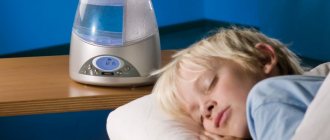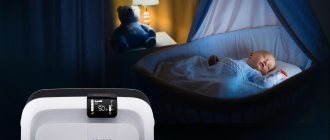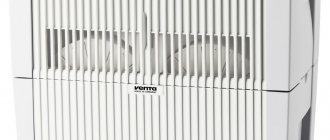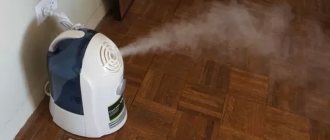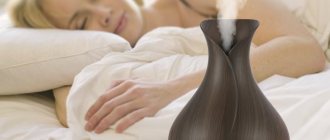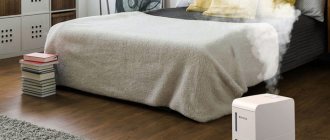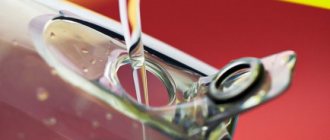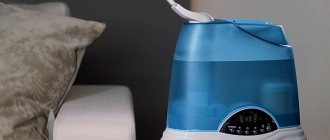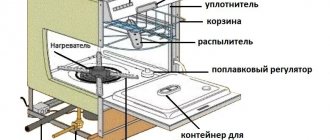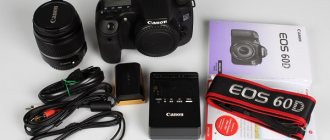The level of air humidity greatly affects your well-being. During the heating season, air flows from radiators and electric heaters mercilessly dry out the already dry air. It’s difficult to be in such an atmosphere, hard to breathe and almost impossible to work, don’t you agree? People with colds and allergies suffer even more, as the irritated mucous surface of the respiratory tract and eyes becomes very sensitive to air quality.
Fortunately, these problems can be solved with the help of an ergonomic air humidifier, which quickly replenishes the amount of moisture missing in the microclimate. However, like any equipment, this device requires careful maintenance. High-quality water suitable for the device will not only extend its service life, but will also have a beneficial effect on the health of household members.
In this material, we will tell you what kind of water to pour into a humidifier, look at the types of this technique and the principles of its operation, and find out how to independently prepare an acceptable liquid for refilling at home.
Why is air humidity important?
Humidity is one of the key characteristics of indoor air quality. According to sanitary standards, the acceptable level of relative humidity in a room in the warm season is 30-60%, in the cold season - 30-45%.
For children, doctors recommend raising this value to 50-60%, since a young developing organism is more sensitive to air parameters. We recommend that you familiarize yourself with the pros and cons of using a humidifier for your child.
To measure humidity, a special device is used - a hygrometer. However, purchasing it for home use is not entirely advisable. A much more profitable purchase would be a wireless weather station, which, in addition to air temperature and atmospheric pressure, also shows the level of relative humidity. Advanced models display information not only about weather conditions outside the home, but also analyze the microclimate in the room itself
The level of air humidity quite clearly affects the state of the body:
- Excessively dry air becomes a companion to long-term respiratory diseases - the depleted mucous surface cannot resist viral or bacterial infection. Therefore, the recovery process is delayed, and undesirable symptoms in the form of a runny nose and cough manifest themselves even more clearly.
- Low humidity makes breathing difficult . Due to lack of oxygen, dizziness and other ailments may occur. It is extremely difficult to concentrate on work in such an atmosphere.
- Skin and hair are the first to suffer from dry air, losing their own moisture . The surface of the eyes also becomes dry, causing the person to experience discomfort.
Additionally, dry air can cause damage to wooden furniture, various finishing materials, musical instruments, and negatively affect indoor plants. During intensive operation of heating devices, the humidity level drops to at least 20%. To avoid these problems, you need to buy a suitable model of humidifier and fill it with high-quality water.
Ways to check air humidity levels
The best way to check is to use a hygrometer or weather station that reads information indoors.
However, if such equipment is not available, you can approximately calculate the humidity level using an ordinary glass of water .
The method of checking the air humidity level using a glass will not give specific percentages. However, in this way you can clearly find out whether the microclimate in the room is sufficiently humid
A glass glass must be filled with cold water and placed in the refrigerator so that the temperature of the liquid drops to approximately 3-5 degrees Celsius. After this, the container is installed in the room at the maximum possible distance from the heating radiators.
If the glass becomes covered with condensation that dries within five minutes, the humidity in the room is considered low. Average humidity is indicated by the persistence of condensation on the walls of the glass even after five minutes. If the glass is covered with small streams and drops, the level of humidity in the room is increased, there is no need to buy a humidifier.
Types of humidifiers and their functioning
Manufacturers offer extremely ergonomic and functional models that work on slightly different principles. What exactly needs to be poured into the humidifier fundamentally depends on the type of equipment. There are several types of such devices currently available on the market.
Type #1 - steam humidifiers
Steam humidifiers evaporate water through natural heating processes. The liquid is brought to a boil and then turns into steam.
These are the most effective models, however, they are not without certain disadvantages, among which are:
- high energy consumption;
- the need to control the level of moisture.
However, some modifications can even be used as an inhaler if the kit includes a special nozzle.
The working principle of a steam humidifier is shown in the diagram above. The design may include a separate compartment for oils. This allows you to make the air not only more humid, but also fragrant. Additionally, some essential oils, such as tea tree, have antibacterial properties that can neutralize airborne pathogens
A significant advantage of such a humidifier is the device’s low demands on water quality, since any clean liquid is suitable for it: artesian, spring, demineralized or distilled. However, it is worth remembering that the generated steam will be inhaled by people, so you should not fill the humidifier with plain water from the public water supply.
Type #2 - cold type humidifiers
Traditional cold-type humidifiers require special cartridges that saturate the blown air with the necessary moisture. Such models are filled with liquid, which the built-in fan drives through the cleaning unit.
Cartridges are extremely susceptible to clogging, so distilled water, free of any impurities, must be used for them.
The diagram shows a cold-type humidifier device. In addition to the main components, the device can be equipped with an air ionizer, an additional antibacterial filter or even an ultraviolet lamp, which also fights microorganisms
However, the cartridge still requires regular replacement: on average, it is updated at least once a quarter. If you do not use distillate, the cartridge will partially remove impurities of heavy metal salts and make the water softer, but will quickly become unusable.
Type #3 - ultrasonic humidifiers
Ultrasonic models produce moisture due to mechanical vibrations on a special membrane. Water entering this unit is split into fine particles, which are carried away by the air flow generated by the fan. The process is carried out without heating, however, along with water, any impurities contained in the liquid are split into fractions.
Therefore, although the ultrasonic humidifier is extremely convenient and productive, the device remains the most sensitive to water quality. Only a distillate that does not contain minerals or unwanted metals is suitable for it.
We discussed in more detail the features of ultrasonic humidifiers, their pros and cons in this material.
The figure shows the structure of an ultrasonic humidifier. In addition to the membrane, the device may have additional cartridges and coarse water filters, which improve the quality of the generated steam
The most primitive and least demanding of water are spray humidifiers, which simply spray tiny drops of water into the air. Any purified water is suitable for them, but do not forget about its characteristics, since microdroplets will get into the lungs.
Another type of humidifier is equipment with an air purification function. We talked more about purifying humidifiers in our next article.
Air humidity and its meaning
One of the most important air parameters that ensures a comfortable stay in a room is relative humidity.
Relative humidity is the ratio of the actual moisture content in cubic meters. air to the maximum possible value at a given temperature.
According to the standard, the value of this indicator should be 30-45% in winter, and in the summer it should be within 30-60%.
At the same time, doctors recommend relative humidity levels of about 40...60% for any time of year, and for children from 50 to 60%. The famous pediatrician Komarovsky strongly advises that when a child has a cold, increase the humidity value to 70%.
It is difficult to ensure such humidity levels, especially with stable operation of heating equipment in winter. Therefore, special devices for air humidification are used for this. And when using them, the problem arises of what kind of water to pour into the humidifier for its effective operation.
The quality of such water is extremely important for people. The vapor from this water directly enters the lungs. Water indicators also directly affect the efficiency, reliability, and durability of the humidifier itself.
Attention. Improper water preparation is indicated by:
- changed color of water;
- white coating on various surfaces of the room;
- lime deposits on the device heaters;
- green deposits in the tank;
- musty smell.
are quite unpretentious to the quality of the water they fill . Any clean water will ensure the operation of a device of this type. However, given that the water for the humidifier in the form of steam will be inhaled by the owners of the equipment, it is worth using special filters to remove chlorine and other impurities. It is useful to reduce the water hardness level to protect the heating element from scale.
Cold-type humidifiers are based on the use of special cartridges that saturate the air blown through them with moisture. Such cartridges are quite sensitive to the quality of water, which is best distilled. Or at least high-quality filtration.
Spray models that spray fine droplets are the least sensitive to water quality Tap water is quite suitable for the device itself. But it is advisable to first pass it through a regular filter to remove chlorine.
The most important solution to the problem of what water to use for a humidifier is for ultrasonic models . Such humidifiers create water vapor when water is exposed to ultrasound. However, in this case, the mineral impurities contained in the water undergo fine transformation. They are the ones who create a white coating on things and surfaces in the room. You should also prevent them from getting into your lungs. Therefore, ultrasonic humidifiers necessarily require distilled water, free of mineral impurities.
Water requirements for a humidifier
As it becomes clear from the above, the degree of purification and demineralization of water suitable for a particular humidifier depends on its type. Most often, manufacturers indicate this information in the device data sheet or instructions.
However, if you plan to pour regular bottled water into the device, it is worth remembering that its particles will enter the body practically unchanged. If the quality of the liquid is poor, this can cause health problems.
Water has a lot of indicators, but for a humidifier the most significant is hardness.
There are two types of water hardness:
- temporary is characterized by the presence of magnesium and carbonate salts;
- constant - the presence of non-carbonate, for example, chlorides or sulfates.
Water with high temporary hardness forms a carbonate salt precipitate when boiled. This is what we see on the surface of pots and electric kettles after long-term use.
Scale on dishes is the main indicator of excessively hard water. You should definitely not use such a liquid for a humidifier.
Its softness directly depends on the temporary hardness of water. Constant hardness or calcareousness indicates the degree of mineralization of the liquid and characterizes its drinking qualities.
Temporary hardness can be partially reduced by boiling or freezing. Additionally, high temperatures will destroy viruses and pathogens. However, if your humidifier requires demineralized water, simply boiling it will not help.
Water hardness is calculated in degrees of hardness °W (°W = 1 mg-eq/l = 1/2 mol/m3):
- soft has indicators up to 2 °F;
- medium hard – 2-10 °F;
- hard – more than 10 °F.
Normal water hardness from a central water supply source should not exceed 7 °F, in some cases – 10 °F. However, already at a level of 4-5 °F, users will observe scale on dishes, a film on the surface of freshly brewed tea, stains on dishes, etc.
Therefore, you should absolutely not pour such water even into an air humidifier that uses undistilled water. The best solution for any humidifier is distillate.
Consequences of choosing the wrong water for a humidifier
If the moisturizing water does not meet the necessary requirements, this is fraught with the following consequences:
- Parts of the device that are in direct contact with unsuitable water will be covered with plaque, which will increase during improper use, forming a hard layer.
- The heating tube will become covered with scale, which will appear due to the high concentration of calcium and magnesium.
- Harmful substances contained in untreated water, including dangerous bacteria and microorganisms, will enter the air with steam. This is harmful not only for the furniture, which will soon become covered with a white coating, but also for human health. Bacteria in the air can cause various diseases of the skin and respiratory system.
- Due to incorrect use, the ultrasonic membrane will quickly wear out and fail.
Also, the choice of what kind of water should be poured into the humidifier directly depends on the model of the equipment, or more precisely on the principle of its operation. For example, distilled water is preferable for cold humidifiers. Otherwise, the device will quickly break down due to clogged filter cartridges. More information about the types of liquid for each type of humidifier is written in the following sections.
Features of distillate preparation
In order not to constantly buy distilled water for a household humidifier, you can prepare it yourself. This distillate is suitable for all types of humidifiers and will be completely safe for household members.
However, the process is quite lengthy and does not make it possible to obtain too large a volume of liquid at one time.
To distill water at home, it is not necessary to use a special apparatus. A saucepan with a concave lid is perfect for these purposes.
To begin with, the water must be allowed to stand for 6-8 hours. During this time, volatile impurities, such as hydrogen sulfide and chlorine, will be naturally removed, and heavy metal salts will sink to the bottom of the dishes used. It is this lower layer of liquid that must be carefully pumped out with a tube, removing about a third of the water.
After this, the water is ready for the distillation process, which is carried out in the following way:
- The settled water is poured into an enamel pan, the volume of which is twice the volume of the prepared liquid.
- A grate is fixed above the surface of the water, on which a container is installed to collect the distillate.
- The pan is covered with a concave lid, with the dome of the lid directed towards the collection container.
- After this, the evaporation process itself begins. After boiling, the water is converted into steam, which, settling on the surface of the lid, turns back into water and flows into the prepared container.
To speed up the distillation process, it is better to constantly cool the surface of the lid.
Ice works great to cool the lid. After contact with a cold surface, steam is quickly converted into purified water
After preparation, distilled water must be cooled and frozen. Part of the liquid that does not freeze must be drained before use.
How to add water to a humidifier?
Filling the humidifier with water always follows the instructions for the device. If documents for equipment are lost, you can search for the necessary information online or on the manufacturer’s official website.
However, there are general principles for replacing water in the device that all owners should follow:
- Any remaining liquid in the reservoir must be completely drained.
- The water container is thoroughly cleaned and washed.
- If there is scale deposits on the walls, it must be removed with a weak solution of vinegar.
Such measures allow you to maintain maximum cleanliness of the humidifier tank, on which the safety of using the device largely depends.
A dirty filter must be replaced, since continued use of a clogged membrane is harmful to health and can cause damage to the device.
If the container is not washed from dirt or mold, the humidifier must not be started. Spores and microorganisms from a humidifier can become airborne and cause certain diseases.
What kind of water can be used in a humidifier?
Not only the duration of operation of the device, but also the nature of the device’s effect on the human body depends on the quality of the water poured into the humidifier. If you use ordinary tap water in the unit, the salts and chlorides dissolved in it will enter the humidified air, and then end up in the respiratory tract of all people in the room.
Children suffer especially badly from bad water in a humidifier, because they breathe at a higher speed and intensity than adults, and therefore many harmful substances will enter their lungs and bronchi.
Also, using dirty tap water has a detrimental effect on the functioning of the device parts. Scale forms on them, and the elements quickly become unusable.
To prevent this from happening, you need to use only clean water (bottled, distilled, demineralized, spring or artesian).
In addition, you can pour boiled and filtered water into the device, but this is often not recommended.
Some chemical compounds (including salts) in tap water are not filtered and do not precipitate after boiling, and therefore can subsequently have a detrimental effect on the health of household members and on the operation of the humidifier itself.
Standing tap water will also not bring much effect. Typically, water is left to settle for 7-8 hours, assuming that in the first 2 hours, chlorine and hydrogen sulfide compounds evaporate from the liquid, and then heavy metal particles are removed from it. But in fact, it will still not be purified.
The best rule to follow is to only fill the humidifier reservoir with water that you can give to your child or drink yourself.
Today, many people are afraid to drink even filtered and boiled tap water, so why put it in humidifiers? It makes more sense to spend money on normal, clean water now than to look for money for medicine later.
Pure artesian water is even sold in vending machines on the streets, and it is inexpensive. Clean, moist air will automatically increase pulmonary immunity, and saving “on matches” (on elementary water!) will not lead to anything good.
If the humidifier does not use all the water from the reservoir in a day, it still needs to be changed and the container cleaned. The fact is that a warm and important environment is perfect for the growth of bacteria.
After turning off the device, you should empty all the water and wash the tank if the device will not be used for the next few hours
The humidifier should not stand with water. When servicing the humidifier and draining the water, it should be unplugged. Otherwise, you may get an electric shock.
Signs of using poor quality water
You can understand that the water placed in the tank does not meet the requirements of the device by the following signs:
- the container smells unpleasant;
- the remaining water has changed color or become cloudy;
- pockets of mold or green plaque have appeared on the walls;
- there is scale;
- An unaesthetic white coating appeared on the furniture in the room.
Traces of scale indicate increased temporary water hardness, which can be removed by pre-boiling. Mold and green growth indicate the presence of spores and bacteria in the water, which can be harmful to health. Plaque on furniture and other surfaces most often appears after using ultrasonic humidifiers, during which, in addition to water, salts are also broken down.
All these facts indicate that the selection and preparation of water for a humidifier needs to be approached more responsibly.
Features of work
Design of an ultrasonic humidifier
The specific features of the operation of an ultrasonic humidifier include its quiet operation. The ear of a normal person does not perceive vibrations in the ultrasonic range. The user will hear the slight rustling of a miniature fan when it is turned on. Another feature of this device is the dependence of its functioning on the quality of the liquid poured into the working container.
Since ordinary tap water most often contains dissolved impurities, during ultrasonic evaporation they spread throughout the room and gradually settle on objects in the form of a white coating. In addition, they accumulate on the internal surfaces of the filling container and the walls of the device, clogging the built-in filter element. The only reasonable way out of this situation is to use distilled water for the humidifier.
The ease of use of these devices includes:
- ease of maintenance;
- low noise level;
- high efficiency of humidification.
A controllable and easily eliminated disadvantage of ultrasonic humidifiers is the settling of white deposits after long-term use and the need to clean surrounding objects.
How to humidify the air without a humidifier?
Methods for increasing the humidity level in a room without using a special humidifier are quite primitive, but still remain quite effective. These methods are suitable for the user if the device suddenly becomes unusable.
Let's take a closer look at these methods, and also recommend that you familiarize yourself with the ten most popular models among users so that you can choose a new humidifier to replace the broken one.
On a trip, when it is inconvenient to take additional equipment with you, knowledge about traditional methods of increasing humidity will also not be superfluous.
To increase the level of air humidity, you can simply fill the pan with water and, after boiling, remove the lid, leaving the liquid to boil over low heat. However, it is worth monitoring the water level in the container to avoid fire hazards. To save gas, you can simply bring the water to a boil and then leave the pan on the windowsill or table.
Placing containers of water near heating appliances will also increase the humidity in the room. To increase the effectiveness of such natural humidifiers, choose dishes with a wide neck, as this will increase the area of evaporation.
Drying things after washing right in the room near the radiator also increases humidity. However, it is worth remembering that clothes must be thoroughly rinsed from detergents, since their components will also enter the air and lungs during the evaporation process. Additionally, radiators can be covered with damp towels, which will also increase the relative humidity.
Indoor plants also have a beneficial effect on humidity levels. The most famous and unpretentious of them is chlorophytum. This lush flower cleanses the air efficiently and improves the microclimate.
Ventilation and wet cleaning are the key to strong immunity and a way to neutralize the chances of getting a cold. These same mandatory measures improve the internal microclimate in the room and increase humidity to the required standards.
Opening the bathroom door after taking a shower is another way to increase the humidity in the apartment. Evaporation from the bathroom will move to other rooms, stabilizing dry air. We looked at more ways to humidify the air without a humidifier in the next article.
However, it is worth remembering that all these artisanal methods of increasing humidity can play an unpleasant joke on your health. If the humidifier evaporates high-quality purified water without unwanted impurities and pathogens, then in the methods described above, any bacteria or viruses, as well as heavy metal salts, chlorine particles and other harmful elements contained in ordinary water, can enter the internal atmosphere of the house.
What kind of water to pour into an ultrasonic humidifier
Inside such a device there is a membrane that vibrates at a high frequency. The liquid inside also begins to vibrate, as a result of which it breaks into small particles and turns into steam.
The fan blows it into the air, causing the humidity in the room to increase. Ultrasound does not have a negative effect on the animal or human body; such models quickly and effectively increase the humidity in the room.
Humidifier device
It is better to pour distillate into such devices, otherwise mineral particles are actively released during the process of converting liquid into vapor into the air. They accumulate on the parts of the device, reducing its performance, and also turn into a white coating that gradually settles on the furniture and causes harm to the body. It is imperative to monitor the humidity level in the room by adjusting the strength of the steam supply.
There are multifunctional devices or climate complexes on sale, the functions of which include not only humidification, but also air ionization. They make almost no noise, but their price tag is high. In order for such a device to last longer, it is also filled exclusively with distillate.
Conclusions and useful video on the topic
The TOP 7 best air humidifiers were compiled by the author of the video below. The review describes the key characteristics of the models, their advantages and disadvantages:
The process of preparing distilled water using a saucepan and a lid is clearly shown by the creator of the following video:
The difference in the results of using an ultrasonic humidifier filled with distilled and ordinary water was revealed by the author of the video below. Using a special device, the content of undesirable impurities was recorded when using ordinary liquid and their low level when pouring distillate:
An air humidifier is an almost indispensable device for the heating season, when the humidity level in the room drops to critically low values. Maintaining a favorable microclimate in housing will help avoid a number of health problems, improve the general condition of the body and the performance of people. Therefore, it is so important to fill the device’s reservoir with high-quality, properly prepared water, on which not only comfort, but also a person’s well-being will depend.
What type of humidifier do you use and what kind of water do you fill in the tank? Share your experience of using the humidifier with other users. If you have questions or want to supplement the above material with useful information, leave your comments in the special block located below this publication.
Design and principle of operation of an air humidifier
The presence of water is key for a humidifier to work effectively. It is this that, passing through the heat treatment zone, forms steam, due to which moisture spreads through the surrounding air space. Before deciding what liquid to use, it is worth clarifying the device and operating principle of the humidifier.
Several types of humidifiers are used today:
- "Cold." The water is forced through a wet filter using a fan. Such a device consumes 3-5 liters of water per day with a power of 20-50 W.
- Steam. They work on the principle of constant boiling of water and the release of steam, which humidifies the air. For devices of this type, it is important to have a hygrostat (a device that measures the level of humidity in a room), since uncontrolled evaporation can lead to a significant increase in humidity levels, and this is a favorable environment for the development of bacteria, fungi, mold and other microorganisms in the room. Water consumption per day is 7-16 liters. Required power 300-600 W.
- Ultrasonic. The most effective of all types. The influence of ultrasonic vibrations through special speakers allows you to saturate oxygen with moisture without excessively heating the water and the need for constant boiling. Water consumption is 7-12 liters per day at a power of 40-50 W.
- Spray type (atomizers). Simple devices for periodically injecting a certain amount of liquid into the air. The device is characterized by a low level of liquid consumption, with low efficiency.
Humidifier design diagram
Modern high-quality models combine several principles of moisturizing. A standard humidifier consists of the following elements:
- Frame.
- Water container.
- Replaceable filter containing silver.
- Liquid heating tube.
- Low power fan.
- Ultrasonic membrane.
- Vaporization chamber.
- UV lamp.
- Sprayer with the ability to direct steam flows.
A standard humidifier consists of 9 components
The humidifier works as follows:
- Water for the humidifier is in a special container and is dosed through a filter cartridge. It undergoes primary cleaning by flowing through a filter. Silver ions significantly improve the quality of cleaning from bacteria and microorganisms.
- The liquid is heated in the heating tube.
- Steam is supplied to the steam generation chamber. Fresh air is supplied there by a fan.
- Under the influence of ultrasonic vibrations of the membrane, the liquid evaporates and the air pumped by the fan is humidified. The gas, saturated with moisture, moves to the sprayer and, with its help, spreads throughout the room.
- As it moves, the air is treated with ultraviolet light, which kills bacteria and microorganisms.
